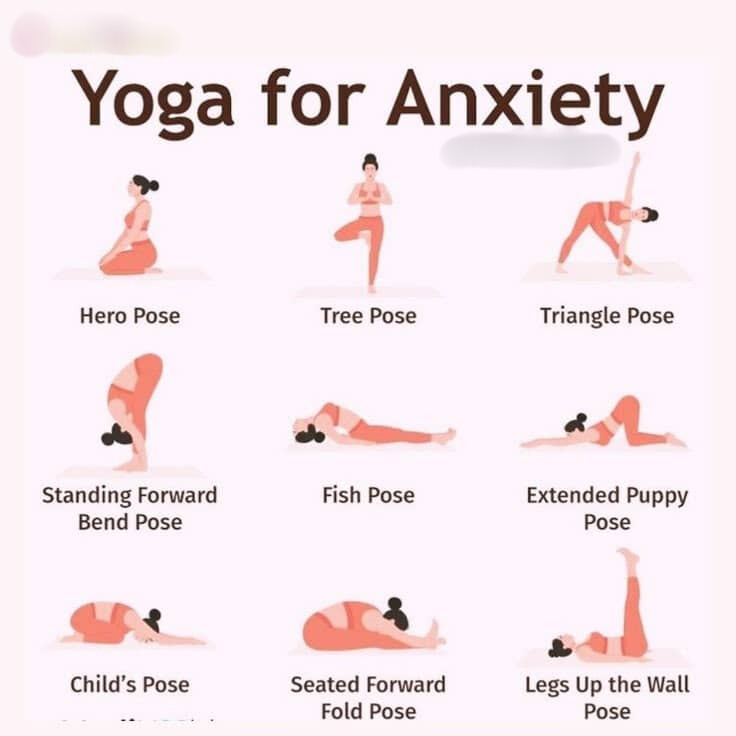Yoga for Anxiety: A Comprehensive Guide to Finding Inner Peace
In today’s fast-paced world, anxiety has become a common issue affecting millions of people. Whether it’s due to work pressure, personal challenges, or the constant influx of information, anxiety can significantly impact our mental and physical well-being. Fortunately, yoga offers a natural and effective way to manage anxiety. In this article, we’ll explore how specific yoga poses can help you find inner peace and reduce anxiety. We’ll delve into each pose, its benefits, and how to incorporate them into your daily routine.
Understanding Anxiety and Its Impact
Anxiety is a natural response to stress, characterized by feelings of worry, fear, or unease. While occasional anxiety is normal, chronic anxiety can lead to severe health issues, including depression, heart disease, and a weakened immune system. It’s essential to find effective ways to manage anxiety to maintain overall well-being.
The Role of Yoga in Managing Anxiety
Yoga, an ancient practice that combines physical postures, breathing exercises, and meditation, has been proven to be an effective tool for managing anxiety. It helps in reducing stress hormones, improving flexibility, and promoting a sense of calm and well-being. Incorporating yoga into your daily routine can provide a structured and accessible way to experience these benefits.
Yoga Poses for Anxiety
Here’s a detailed breakdown of each pose and its benefits:
1. Hero Pose (Virasana)
How to Do It:
- Kneel on the floor with your knees together and your feet slightly wider than hip-width apart.
- Sit back on your heels and place your hands on your thighs.
- Keep your spine straight and breathe deeply.
Benefits:
- Promotes relaxation and reduces stress.
- Improves digestion and relieves fatigue.
- Enhances mental clarity and focus.
2. Tree Pose (Vrksasana)
How to Do It:
- Stand tall with your feet together.
- Shift your weight onto your left foot and place your right foot on your left inner thigh.
- Bring your hands together in front of your chest or extend them overhead.
- Hold the pose and breathe deeply.
Benefits:
- Improves balance and concentration.
- Strengthens the legs and core.
- Promotes a sense of grounding and stability.
3. Triangle Pose (Trikonasana)
How to Do It:
- Stand with your feet wide apart.
- Turn your right foot out 90 degrees and your left foot slightly in.
- Extend your arms to the sides and bend at the waist to reach your right hand towards your right foot.
- Keep your left arm extended upwards and gaze at your left hand.
Benefits:
- Stretches and strengthens the legs, hips, and spine.
- Improves digestion and reduces stress.
- Enhances overall flexibility and balance.
4. Standing Forward Bend (Uttanasana)
How to Do It:
- Stand with your feet hip-width apart.
- Bend at the hips and reach your hands towards the floor.
- Let your head hang and relax your neck.
Benefits:
- Calms the mind and reduces anxiety.
- Stretches the hamstrings and lower back.
- Improves blood circulation to the brain.
5. Fish Pose (Matsyasana)
How to Do It:
- Lie on your back with your legs together and your arms at your sides.
- Lift your chest and arch your back, placing the top of your head on the floor.
- Hold the pose and breathe deeply.
Benefits:
- Opens the chest and improves breathing.
- Relieves tension in the neck and shoulders.
- Promotes relaxation and reduces fatigue.
6. Extended Puppy Pose (Uttana Shishosana)
How to Do It:
- Start on your hands and knees.
- Walk your hands forward and lower your chest towards the floor.
- Keep your hips over your knees and stretch your arms forward.
Benefits:
- Stretches the spine and shoulders.
- Calms the mind and relieves stress.
- Improves flexibility and posture.
7. Child’s Pose (Balasana)
How to Do It:
- Kneel on the floor and sit back on your heels.
- Extend your arms forward and lower your chest towards the floor.
- Rest your forehead on the mat and breathe deeply.
Benefits:
- Promotes relaxation and reduces anxiety.
- Stretches the lower back and hips.
- Calms the nervous system.
8. Seated Forward Bend (Paschimottanasana)
How to Do It:
- Sit with your legs extended in front of you.
- Bend at the hips and reach for your feet.
- Keep your spine straight and breathe deeply.
Benefits:
- Calms the mind and reduces stress.
- Stretches the spine and hamstrings.
- Improves digestion and relieves fatigue.
9. Legs Up the Wall Pose (Viparita Karani)
How to Do It:
- Sit close to a wall and swing your legs up onto the wall.
- Lie back and extend your legs upwards.
- Rest your arms at your sides and breathe deeply.
Benefits:
- Promotes relaxation and reduces anxiety.
- Improves circulation and relieves swollen feet.
- Calms the nervous system and reduces stress.
Benefits of Yoga for Anxiety
- Reduces Anxiety: Regular practice of these yoga poses helps in lowering stress hormones, promoting relaxation, and reducing anxiety.
- Improves Flexibility: The various poses and stretches improve your flexibility, making daily activities easier and reducing the risk of injuries.
- Enhances Mental Clarity: Yoga encourages mindfulness and meditation, helping you stay focused and clear-headed.
- Boosts Physical Health: The physical postures improve strength, balance, and overall fitness, contributing to better health.
- Promotes Emotional Well-being: The calming effects of yoga help in managing emotions, reducing mood swings, and promoting a sense of well-being.
Tips for Incorporating Yoga into Your Daily Routine
- Set a Specific Time: Choose a time of day that works best for you, whether it’s morning, afternoon, or evening. Consistency is key.
- Create a Comfortable Space: Find a quiet, comfortable space where you can practice without distractions.
- Start Slow: If you’re new to yoga, start with simpler poses and gradually move to more complex ones.
- Use Props: Don’t hesitate to use yoga props like mats, blocks, or straps to help you get into poses comfortably.
- Stay Hydrated: Drink plenty of water before and after your practice to stay hydrated.
- Listen to Your Body: Pay attention to how your body feels during and after practice. Avoid pushing yourself too hard.
Conclusion
Yoga offers a practical and effective way to manage anxiety and improve your overall well-being. By incorporating these simple yet powerful yoga poses into your daily routine, you can experience significant benefits, both mentally and physically. Remember, consistency is key, and with regular practice, you’ll find yourself feeling more relaxed, focused, and energized. So, roll out your yoga mat and start your journey towards an anxiety-free life today.










